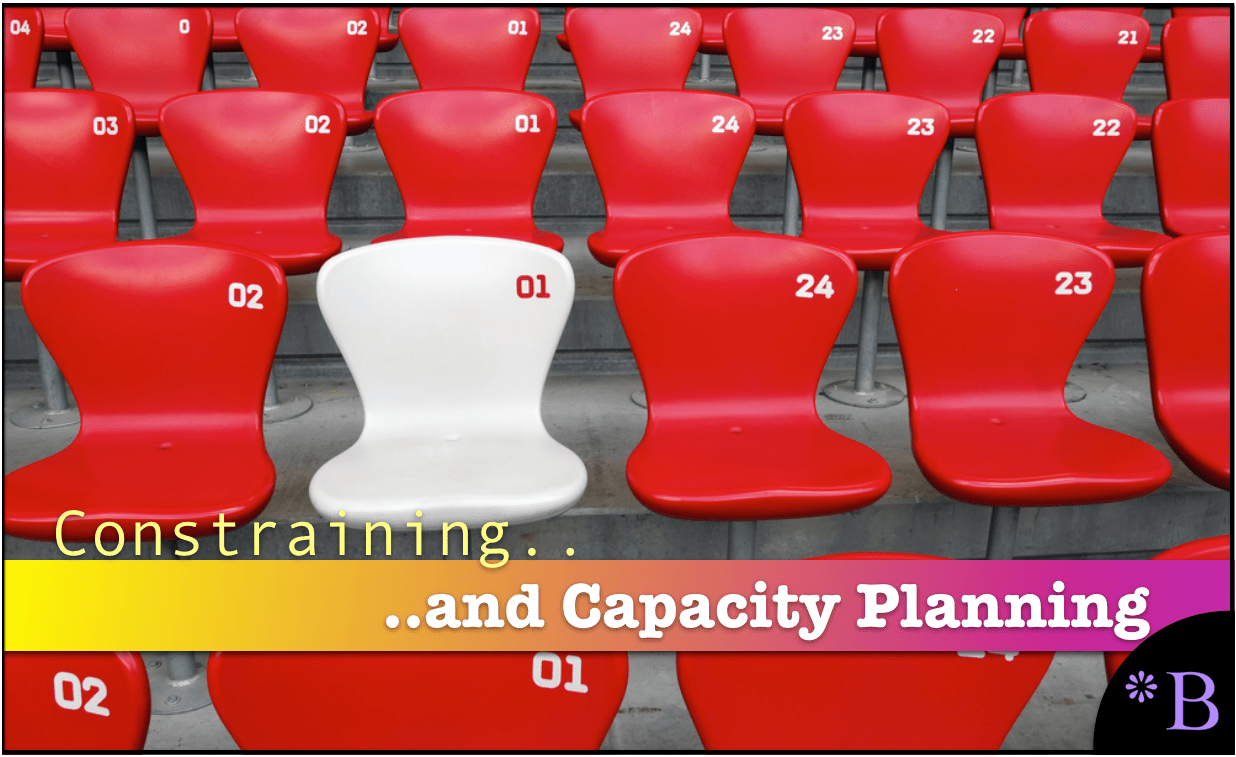Executive Summary
- Constraining the supply plan is a tricky endeavor.
- We cover why a more fundamental approach to constraining can provide many benefits.
Introduction
Constraining the supply plan has a troubled history. The following issues have restricted the application of constrained supply planning in the industry.
- The concept of containing the supply plan only exists in specializes supply planning systems. This means that the vast majority of companies have no systematic way to constrain their supply plan.
- ERP systems allow for capacity leveling but not for constraining.
- Even companies that do have specialized supply planning systems, the complexity of setting up constraints in those systems (often combined with the difficulty in getting constraint data) means that, indeed, constrained supply planning is quite rare. That may seem a contradictory statement, as supply chain planning vendors have promised constraint-based planning. Still, this observation comes from observing many projects and conferring with other technical resources focused on optimizing supply planning.
An Overly Complicated Approach
Most of the applications that offer capacity constraining are based on something called cost optimization. Cost optimization was first broadly popularized by a company called i2 Technologies in the mid to late 1990s. However, i2 Technologies significantly overstated how much optimization it did on projects and continued to sell optimization even when it often used heuristics in actual implementations.
SAP, which took over as the most commonly used optimization software when i2 Technologies went into its decline, offered cost optimization with its cost optimizers in SNP and PP/DS. However, like i2 Technologies, SAP has also failed to pull off cost optimization or constraint-based planning in any meaningful way. We have evaluated many SAP SNP and PP/DS projects throughout the years and found the same thing on every account we have reviewed.
Furthermore, cost optimization is a poor fit for both supply and production planning as neither supply planning nor production planning has as their primary objective cost minimization.
- Supply planning is better suited to service levels as the objective.
- Production planning is a better fit for duration optimization.
Concerning constraining the supply plan, it turns out that the majority of projects that do any constraining only restrict the production resources.
However, in each case, it now appears clear that only a small percentage of companies will be able to master either inventory optimization or duration optimization.
How to Use Software to Effectively Constrain?
While constraining has proven to be quite tricky in practice, the concept of constraining is correct.
One must be able to know what the limits are on the system. However, it must be able to see the constraints at the same time that it considers the following:
- Service Levels
- Inventory Parameters
- Costs Implications
This allows the company to make adjustments while witnessing the outcome of those adjustments.
That is what we have done with Brightwork MRP & S&OP Explorer. However, while most of the systems with high complexity and the associated lengthy implementation durations and overhead, we designed our application to work as naturally as possible.
Time-phased constraints present an appealing idea. This is that the constraints will be accurate per time period, leading to a precise plan. However, it does not consider the overhead to maintain such constraints.
The Complexity of Time-Phased Planning
One of the complexities that advanced planning vendors developed was time-phased planning. This is positive in that it provides a higher degree of accuracy. Still, it has the negative consequence of being more complex and requiring more effort to update the system’s constraints — as the constraints must also be time-constrained.
In observing real projects, this process of maintaining continually altering time-phased constraints has resulted in many companies that have migrated to this approach being unable to keep up with the maintenance. A significant reason is that the software vendor overestimates the amount of time and resources that the implementing company can allocate to this task. This causes the system to become out of date and for the system to then fall into disrepair with respect at least to its use for constrained-based planning.
This is an example of designing the application to optimal use rather than matching the application design to the customer’s investment willingness.
We decided to dispense with time-phased planning for our planning software due to this observation.
Therefore we use average constraints that adjust per unit (either procured or produced) and calculate an average. This allows the system to be more easily maintained. We calculate an average inventory level, as well as an average consumption of resources. It is a different approach than any we have seen in other software vendors. There may come a time where we move to time-phased planning (although more simple than what is offered by other vendors), but doing so would require much larger investments in time from customers to support the planning process and the data acquisition maintenance we have seen.
